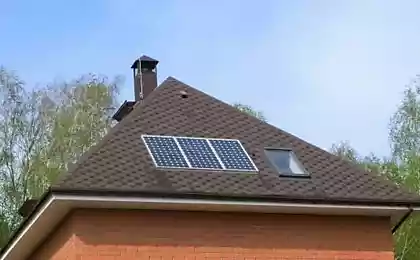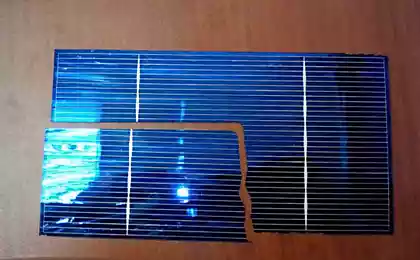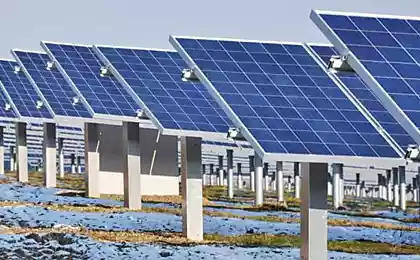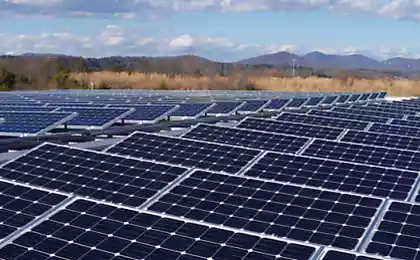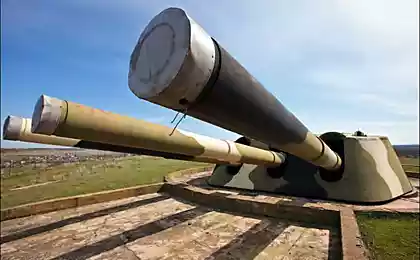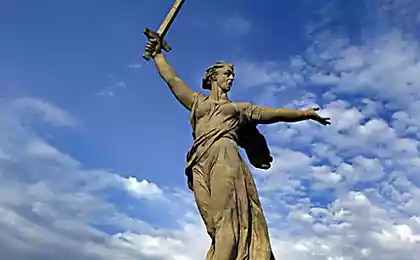832
Comparative test of solar panels: flexible vs rigid
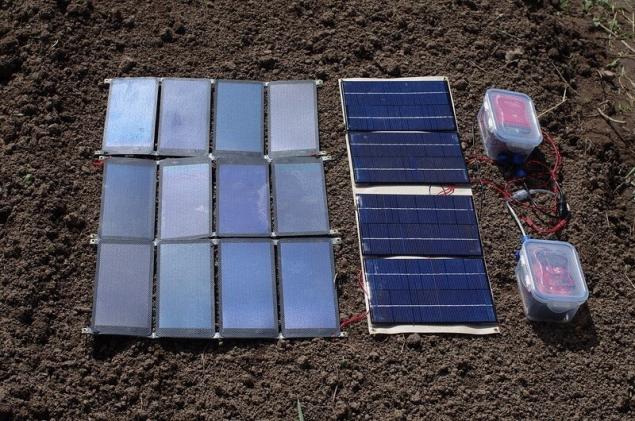
As promised in the previous post, here is a comparative test of two homemade solar panels from Chinese elements. The essence of the test is to measure the REAL energy produced by each battery in real conditions. For this purpose each of battery charges your own powerbank for hours (charge controllers, in both cases the same type).
The parameters of solar panels:
1). Flexible 12W solar panel nominal power (amorphous silicon). Consists of 12-watt socket (combined in section 3 to 4 elements), each with a voltage of 2V (1.5 V working voltage). All connection sockets — consistent. These batteries I have previously repeatedly been tested and there really, cloudless sky, and with a PRECISE orientation to the sun, it turns out 12W (sometimes even 13). In the day of 6 may of this year (cloudless), the maximum result I obtained 11.5 watts. Without a precise orientation to the sun (just lying on the ground), the battery gave out about 7W at noon.
Size of panels: 190×90mm. Total weight of battery: 380гр.
2). Tough solar battery 16w nominal power (polycrystalline). Consists of 4 sockets at 4W. The voltage of one panel is 21V (18V — working voltage). The connection of all sockets are in parallel. This battery earlier, I have not experienced the normal sun, so the result was unpredictable :) on the same afternoon of may 6, the battery gave out 13.5 watts at precise orientation to the sun, and about 10W just lying on the ground.
The size of one panel: 200 x 130mm. Total weight of battery: 700 g.
It should be noted that both of the used battery is not only foldable, but also portable (and crystal — so all fully collapsible).
Charge controllers:
With both panels used the same type of pulsed charge controller with MPPT function (on-chip CN3722). Voltage MPPT exhibited at operating voltage 18V (it is the same for both solar).
Powerbank:
Both powerbank contained 6 pieces of 18650 lithium batteries, connected according to the scheme 3s2p, including the protection Board and balancing.
Before testing both batteries discharged to a voltage of 9V the current is 0.5 A. When measuring the accumulated capacity, as there is a discharge current of 0.5 A voltage to 9V.
But, in fact, the testing process. Like I said, the testing will be held in the garden. This is not a figure of speech, and the most natural vegetable garden, even have something planted the other day :) it is Located in Klin district of the Moscow region (North West, not the solar direction).
The testing I conducted twice, on 8 and 9 may. In any case, in the second test, I switched the battery and powerbank (with charge controller) is in the final result, however, is not affected.
Test 1 (08.05.2015):
Start 8.25, finish 14.25 duration of 6 hours. It was pretty Sunny, though constantly there was a steady "haze" of Cirrus clouds. Shade from trees and buildings sometimes the battery got, but mostly this time of day, this garden is still open to the sun.
The result (stored energy, in watt-hours):
— Flexible: 31.8 W*H (average power — 5.3 W);
— Hard: 39 W*H (average power 6.5 W);
Test 2 (09.05.2015):
Start 14.10, 19.10 finish, duration 5 hours. The lighting conditions were significantly worse than in the previous test. On the one hand, were often quite powerful Cumulus clouds. And additionally, in these hours (afternoon) my test bed was often covered long shadow of the trees. And the duration of the test was smaller.
The result (stored energy, in watt-hours):
— Flexible: 12.2 W*H (average power — 2.44 W);
— Hard: 15 W*H (average power — 3W);
Note to the "Humanities" — battery capacity 2500mAh standard smartphone, translated in watt-hours is equal to 9.25 W*h Respectively, draw conclusions, how many times, exactly what, and how much time it is possible to charge from the sun :)
My conclusions on the test results:
1. Once again confirmed the old truth that the solar battery is not in vain called exactly "Sunny", and not, say, "light" :) they Love direct sun! And it is not like its absence, even if you are around, it would seem, quite light :) Although, of course, some energy still continue to develop...
2. These specific crystal elements were quite "working", although it is expected, / / / / a little exaggerated power rating. It should be noted that the stated capacity of the flexible battery is closer to real.
3. Even during the "preliminary" study of the properties of the batteries before testing, I noticed one important thing (which, in General, was then confirmed by the test results) — flexible battery had a narrower "beamwidth" in the sun. In other words, if the battery is not oriented precisely in the sun, its power have been significantly reduced. But the relative reducing power crystal battery was still less! I suspect that his role in this was played by a thick layer of varnish on the surface of the hard battery which leveled inaccurate positioning.
4. Contrary to popular belief that a flexible battery is slightly better behaved in scattered light (particularly in the shadows), my experiment did not reveal! However, do not exclude the fact that there simply is leveled by the previous factor (reaction to an inaccurate orientation).
5. In General, I personally, perhaps in the future I will not neglect to crystal batteries! The main disadvantage of a specific rigid concrete vs. flexible — more weight (380 g vs 700 g). But for me personally, as the "Vodnik" and "fishwife", the difference in 300 g of special weather does not. Yet, perhaps, flexible battery smaller and more convenient in the folded (i.e., "transport"). This is more important, but not critical.
And then the crystal battery start the pros. The first and most obvious — it is more than 2 times cheaper! Second — it is significantly easier to work with due to almost three times smaller area — very easy and simple to carry or clip somewhere on the deck of a boat or things. Thirdly, real power more. Fourth, no matter how ironic, but she is even more "unbreakable, die hard"! This is in virtue of the fact that all panels have it connected in parallel, easily replaced, while damage to individual panels is absolutely not critical (in the campaign just reduce power, and then, upon returning home, put the new socket to replace retired — and the battery will still remain operational even with only one socket). published
P. S. And remember, only by changing their consumption — together we change the world! ©
Source: www.shpilev.net/archives/441


